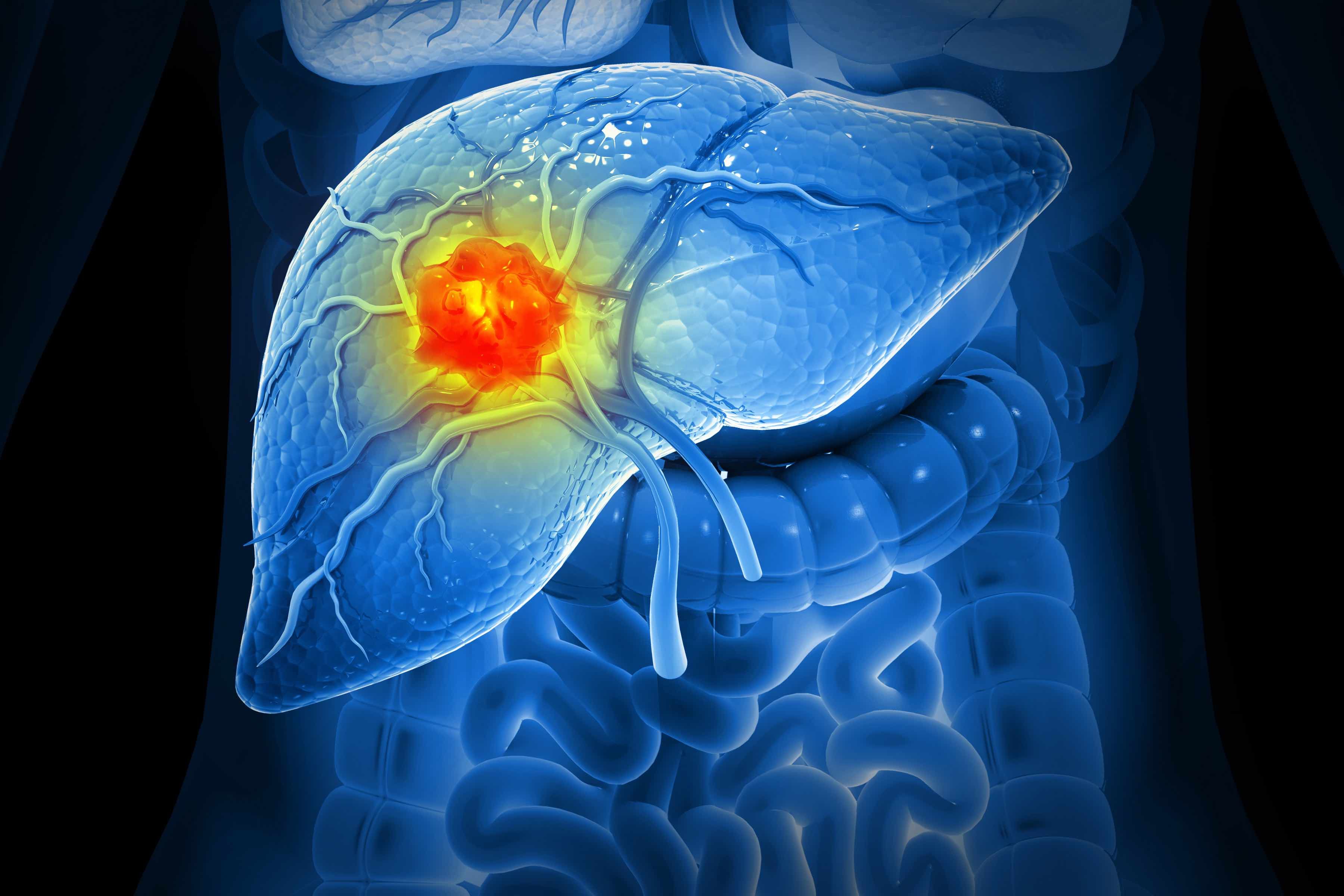- Center on Health Equity & Access
- Clinical
- Health Care Cost
- Health Care Delivery
- Insurance
- Policy
- Technology
- Value-Based Care
Study Finds Increasing Hepatocellular Carcinoma Incidence, Mortality in the US
An analysis of nationwide data over 2 decades identified demographic-specific trends in liver cancer incidence and mortality in the US.
According to a recent study published in the Journal of Clinical and Translational Hepatology, incidence and mortality rates of hepatocellular carcinoma (HCC) are increasing, with disparities seen between men and women in a range of racial/ethnic groups.
Incidence rates of HCC are known to have increased, but data on demographic-specific incidence and mortality trends in the US are lacking. Therefore, the study authors aimed to comprehensively analyze HCC incidence and mortality trends across demographic groups over the past 2 decades.
Hepatocellular carcinoma illustration | Image credit: Crystal light - stock.adobe.com

The study authors calculated age-adjusted HCC incidence using data from the CDC’s United States Cancer Statistics database, which includes information on newly diagnosed cancers across approximately 98% of the US population, from January 1, 2001 to December 31, 2020. Data from the CDC’s National Center for Health Statistics database, which covers nearly 100% of deaths in the US, were used to determine age-adjusted HCC mortality rates between January 2000 and December 2020.
Focusing on trends across various demographics, the authors assessed:
- The overall and sex-specific incidence and mortality rates and time trends of HCC across age groups, with older defined as at least 55 years and younger less than 55 years of age
- Sex– and age-specific incidence and mortality rates and time trends of HCC across racial and ethnic groups (Non-Hispanic White, Non-Hispanic Black, Hispanic, Non-Hispanic Asian/Pacific Islander, and Non-Hispanic American Indian/Alaska Native)
- The impact of tumor stage at diagnosis, early or late, on sex– and age-specific incidence rates and time trends
Joinpoint regression calculated annual and average annual percentage change (AAPC), and a sex-specific pairwise comparison was also conducted.
A total of 467,346 patients received an HCC diagnosis between 2001 and 2020, and 26% of those patients were women. Both sexes saw an increase in incidence without any significant difference overall. In women, HCC incidence increased from 2.38 per 100,000 population in 2001 to 3.09 in 2020, while men saw an increase from 7.32 in 2001 to 9.82 in 2020.
But, among younger adults (n = 78,169), only men saw a decrease in incidence, with an AAPC difference of –2.39 (P = .002). The incidence rate dropped from 3.28 per 100,000 in 2001 to 1.93 per 100,000 in 2021, while women had an incidence of 0.73 per 100,000 in 2001 and 0.70 per 100,000 in 2021. This trend was also seen across racial and ethnic groups, mostly due to early-stage tumors, where there was an AAPC difference of −2.65 (P = .02).
The data also showed increases in mortality for both sexes over the study period, which encompassed 329,973 deaths attributed to HCC overall. Women comprised 28.4% of deaths due to HCC from 2000 to 2020, with an AAPC increase of 0.90, compared with an increase of 1.90 among men. In older adults, mortality increased across both sexes, but in younger adults, mortality decreased for both sexes, with men showing an AAPC change of –3.09 and women a change of –1.49.
Declining mortality in younger adults was seen across racial and ethnic groups, but especially among Non-Hispanic American Indian/Alaska Native patients (AAPC difference, −4.51; P = .01).
Study limitations included a lack of data for many variables in the databases, which limited the identification of risk factors associated with incidence and mortality across the evaluated demographics. Still, the authors consider the findings hypothesis-generating and observational, potentially helping guide further research.
Reference
Abboud Y, Ismail M, Khan H, et al. Hepatocellular carcinoma incidence and mortality in the USA by sex, age, and race: a nationwide analysis of two decades. J Clin Transl Hepatol. 2024;12(2):172-181. doi:10.14218/JCTH.2023.00356
